**Is there a connection to the neurological disease severely sickening and killing humans in New Brunswick?**
Mysterious Brain Syndrome Stumps Canadian Doctors, Six years after they were first reported, debilitating neurological symptoms have shaken the province of New Brunswick and still have doctors in Canada stumped.
New Brunswick Cluster of Neurological Syndrome of Unknown Cause
Mysterious Illness Killing Songbirds in 6 States by Kate St. John,
Outside my Window
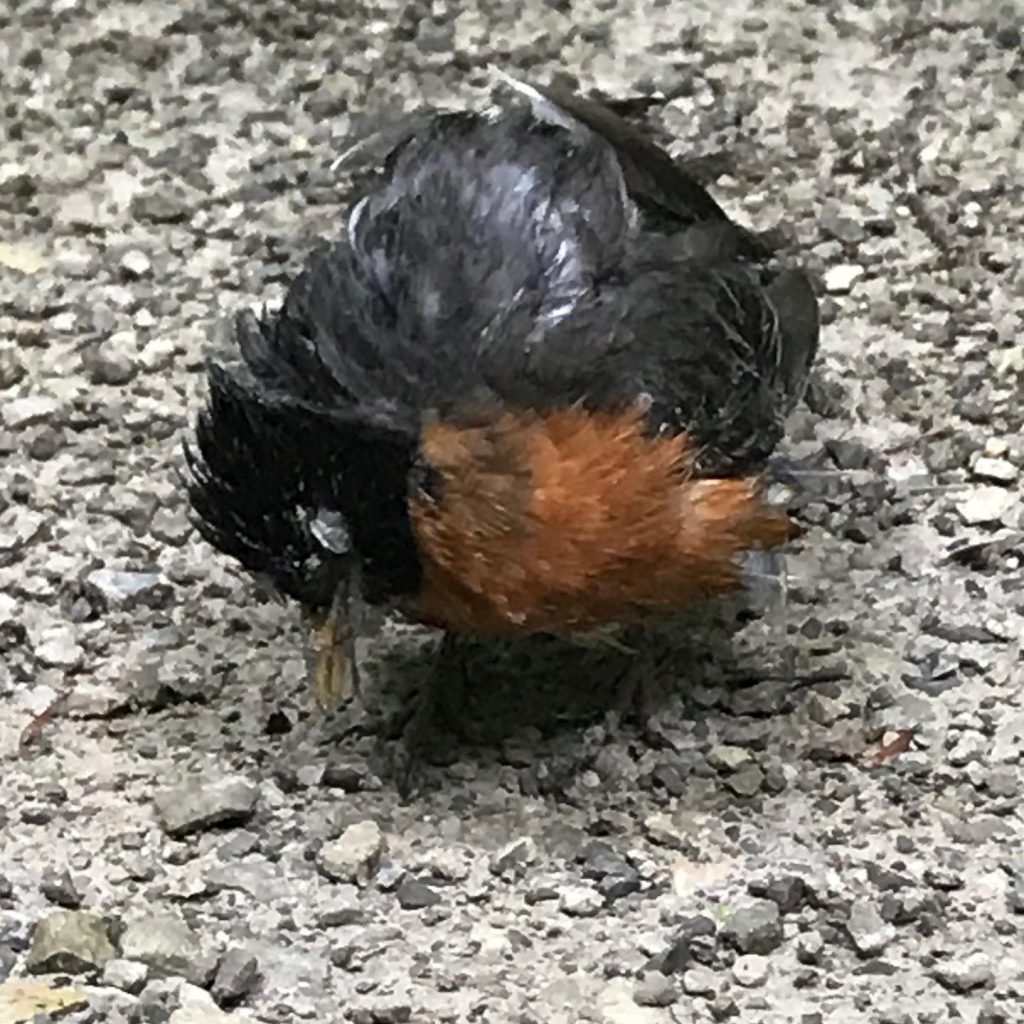
Signs of a mysterious illness that is causing crusted-over eyes, blindness, neurological issues, and even death is starting to show up in local birds. Larger birds such as blue jays, starlings, robins, and grackles seem to be most noticeably affected, but other birds may be affected as well. If you encounter sick or dead birds, please contact the Ohio Wildlife Center at 614.793.9453 or the Ohio Division of Wildlife at 1.800.WILDLIFE. Until the cause is determined, Preservation Parks has removed bird feeders from our parks to avoid any possible spread if the issue does happen to be caused by individual contact with other birds.
A mysterious illness, first recorded in the DC area in mid April 2021, is blinding and killing songbirds in six states. Scientists at many labs are investigating but there are still no answers. No one knows what’s causing it.
Symptoms include crusted-over eyes, blindness, seizures, loss of balance, and death within a day. Indiana DNR reports that the illness mostly affects medium-sized songbirds: blue jays, American robins (photo at top), common grackles (photo below), starlings, northern cardinals, and brown-headed cowbirds.
So far the disease has been reported in the DC area including Virginia, Maryland, and the eastern panhandle of WV, and in central and southwestern Ohio, parts of Indiana, and north-central Kentucky. My attempt to map the disease centers, below, is missing many incidents outside the red dots.
For instance, Indiana DNR lists the counties where the illness has occurred. My map does not included these scattered locations. (In other words, don’t rely on my map.)
Though no one knows what’s causing the illness, avian flu and West Nile virus have been ruled out.
Residents in affected areas are asked to take their feeders down so that birds do not congregate. There are good reasons to do so …
Megan Kirchgessner, a veterinarian with Virginia’s Department of Wildlife Resources, said “From a veterinary perspective, especially in the springtime when food is abundant, there’s no reason for those feeders to be out,” she said. “And to be perfectly honest, especially in a situation like this, they can do more harm than good.”
— Washington Post, Public urged to stop feeding birds, 14 June 2021
Some, including an ornithologist at the Smithsonian Migratory Bird Center, have speculated the illness is related to the Brood X cicada emergence (yellow on the map below), that the birds are consuming pesticide-laden or fungus-laden cicadas. If so, the disease will disappear in July when the cicadas do and will not return for 17 years.
The cicada connection occurred to me too, but there are two ways it doesn’t match up.
- Brood X (yellow on the map above) also emerged in Pennsylvania and Delaware yet, as of this writing, there are no reports of the mysterious illness in those states. (*See Gigi’s comment below.)
- Kentucky has no Brood X cicadas but the disease has been found in Kentucky’s north-central counties.
For now we wait for more information and pray the illness doesn’t spread.
PHOTOS: Experts search for answers to mysterious disease affecting wild birds Kate Ryan, May 28, 2021, WTOP News
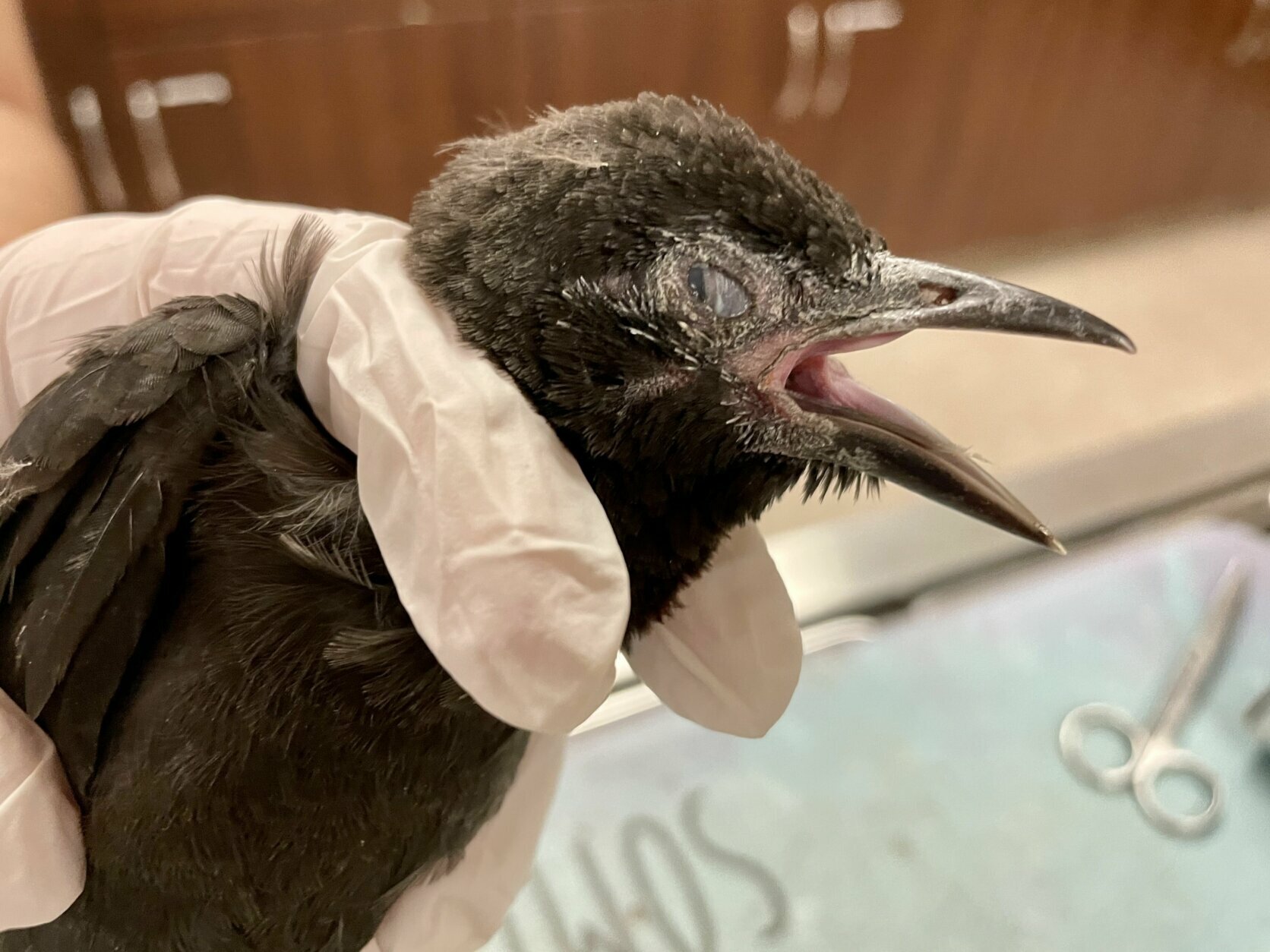
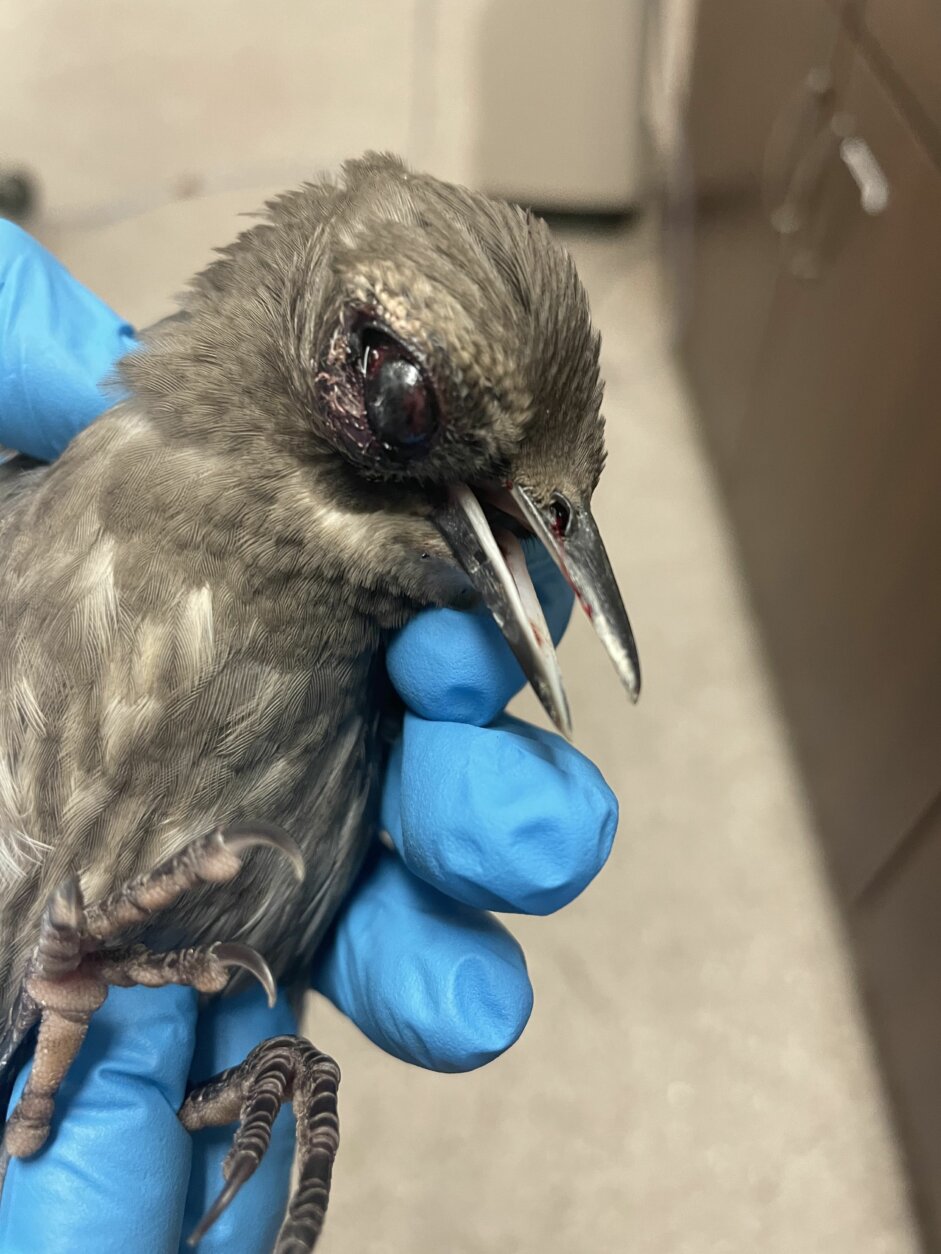
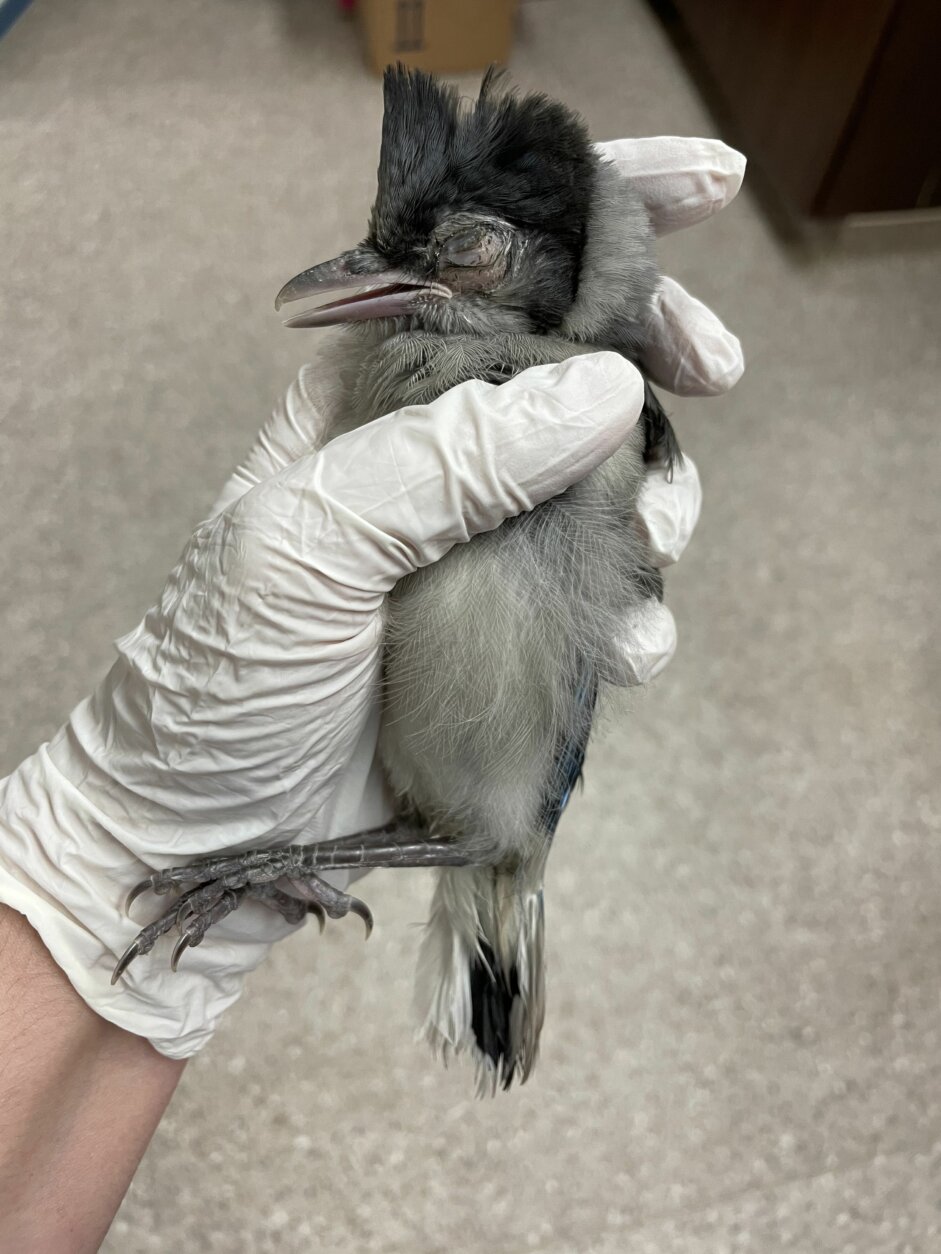
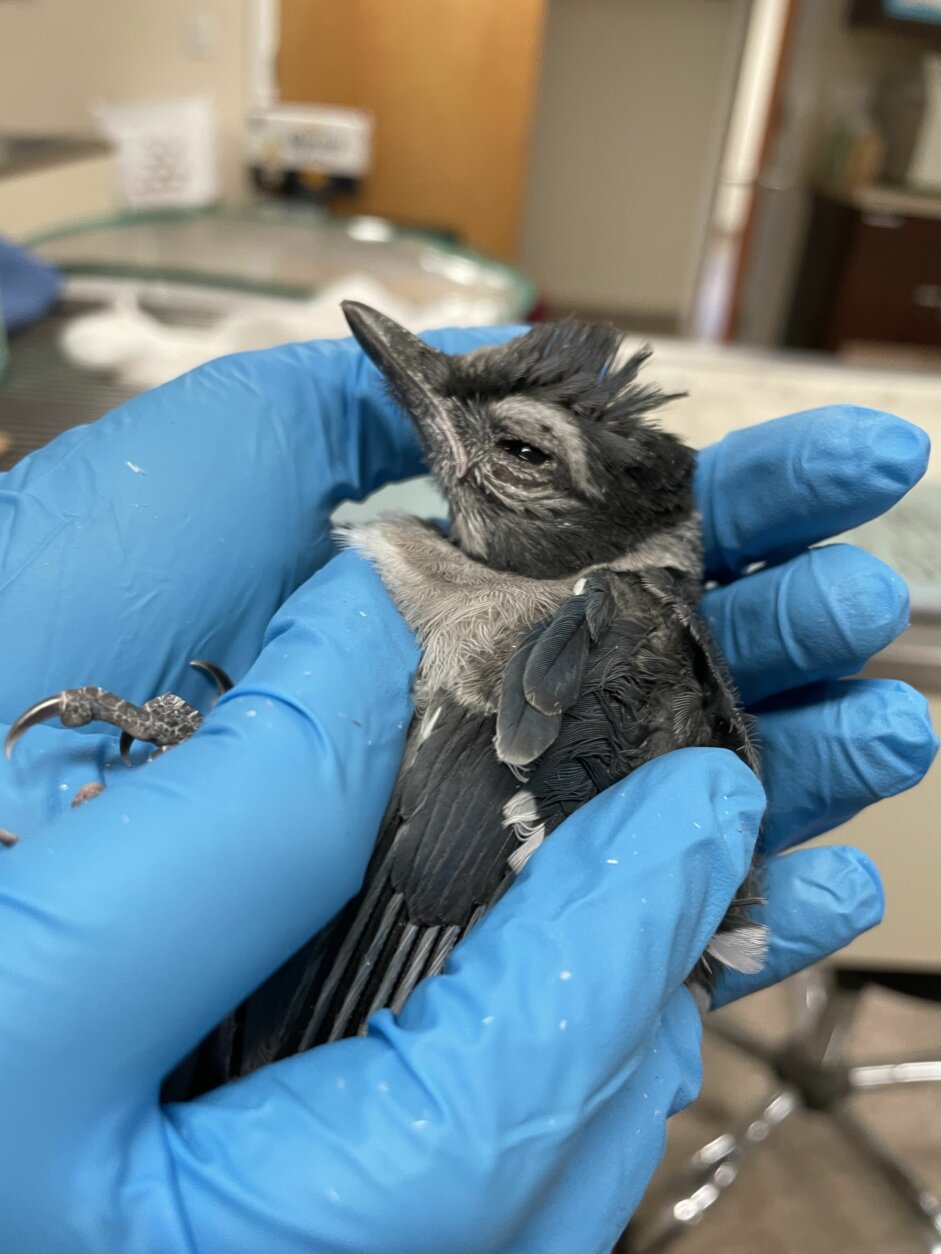
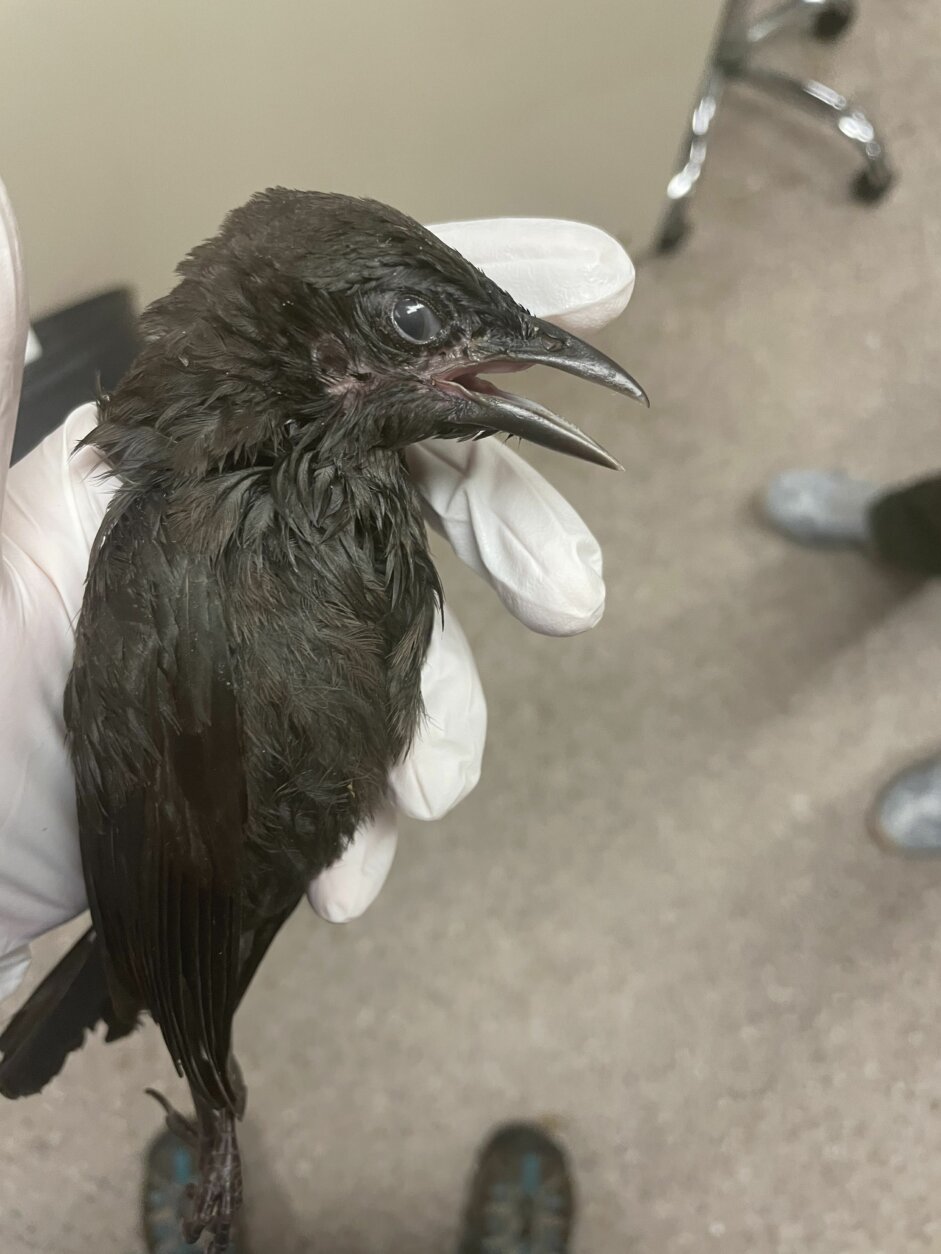
They’ve been found on sidewalks and in backyards with eyes crusted over and unable to maintain their balance.
Wild birds in D.C., Maryland and Virginia have been brought into animal shelters and wildlife rehabilitation facilities for weeks. The sick and dying birds keep coming, but the answers are in short supply.
Paula Goldberg, a licensed wildlife rehabilitator who sits on the board of City Wildlife in the District and volunteers with Second Chance Wildlife Center in Gaithersburg, Maryland, said the illness is perplexing.
The crusted-over eyes look similar to Mycoplasmal conjunctivitis, a disease found when birds eat from birdfeeders that aren’t cleaned regularly. But the neurological symptoms set this illness apart, said Goldberg.
The birds being found now are “bobbing their heads in an unusual way, and are not able to gain their balance,” Goldberg said. They aren’t responding well to treatment, often declining rapidly in care and dying.
Dr. Jen Riley, director of veterinary services at the Blue Ridge Wildlife Center in Boyce, Virginia, said the scale of the problem is concerning. “We’ve had cases from West Virginia. Other people have reported it in Ohio and Maine,” she said.
The illness has been spotted mostly among Blue Jays, Grackles and European Starlings, but Jim Monsma at City Wildlife said the most recent cases there include Robins, Mockingbirds and at least one type of wren.
Riley said her organization also had a Barred Owl who showed similar symptoms.
She also said the state wildlife veterinarian from Virginia has sent samples to the Southeastern Wildlife Cooperative Disease Study at the University of Georgia to see if they can determine the cause of the illness.
“They’re looking at different viruses, parasites, bacterial things,” she said, but “to my knowledge, nobody has any good results yet.”
Birds have also been sent to the National Wildlife Health Center at the United States Geological Survey for necropsies, the examination of animals after death.
Because they don’t know what’s causing the symptoms in the birds, and whether it’s an illness that could spread to humans, Riley is advising anyone who brings a bird to wildlife rehabilitators to wear gloves and a mask, and urges them to dispose of the container that they use to transport the bird.
“I would just tell people to keep an eye out for it, and to report it to their statewide wildlife agencies if they see it,” said Riley. “It’s something that could be spreading quickly and widely, so I hope that people in other areas are also looking out for it.”
More information and assistance can be provided at City Wildlife in the District, Blue Ridge Wildlife Center in Virginia and Second Chance Wildlife Center in Maryland.
West Virginia Monitoring Mysterious Bird Illness by Steve Allen Adams, Jun 28, 2021, The Intelligencer
CHARLESTON — While COVID-19 appears to be greatly diminished in the Mountain State, wildlife experts are trying to find answers to a new plague affecting birds all over the east coast.
According to the Division of Natural Resources, birds in West Virginia, Virginia, Maryland, Washington, D.C., and other states are seeing cases of sick or dead birds.
Since May, state and federal wildlife agencies have received reports of birds acting abnormally and exhibiting signs of neurological decay, such as exhibiting confusion or lethargy.
These birds are often found with swollen eyes and what is described as a crusty discharge.
In a recent press release, the WVDNR said it sent several birds from Berkeley and Jefferson counties off to the Southeastern Cooperative Wildlife Disease Study for further investigation. Multiple state and federal agencies are trying to find answers.
“The WVDNR, Virginia Department of Wildlife Resources, District of Columbia Department of Energy and Environment, Maryland Department of Natural Resources, and National Park Service are continuing to work in partnership with diagnostic laboratories to investigate the cause of mortality,” WVDNR said in a statement. “Those laboratories include the USGS National Wildlife Health Center, SCWDS, and the University of Pennsylvania Wildlife Futures Program.”
Speculation about the cause of the deaths and health issues include a new disease, pesticide use, and the onslaught of cicadas. The illness also appears to affect multiple bird species, such as robins, blue jays, starlings, and sparrows.
Katie Fallon, a co-founder of the Morgantown-based Avian Conservation Center of Appalachia, said her organization has only received a couple of European Starlings with similar symptoms between May and June. The ACCA works with injured or ill birds to nurse them back to health, helping more than 300 birds so far this year.
“My understanding is the Eastern Panhandle is really the area affected in West Virginia,” Fallon said. “We really haven’t had calls about sick birds and we get calls about everything … we are definitely looking out for it and we want anyone who sees birds with these symptoms to report it.”
Fallon said she also doesn’t know what the cause of the illness is, though she noted it seems to be affecting young birds not long after they leave their nests. She said the ACCA received several sick birds with similar symptoms in 2016, the last time the cicadas emerged. If birds are mostly feeding on cicadas due to their abundance, there could be a link.
“I don’t think anyone has determined what this is yet,” Fallon said. “There is a suggestion it could have something to do with the cicadas. Perhaps things people are spraying in order to keep cicadas off of trees. But from what I’ve read, it seems to be young birds that are affected mostly.”
According to the WVDNR, the spread of the new disease could be due to birds congregating at feeders and baths, spreading the illness to other birds and continuing the vicious cycle. WVDNR recommends that people take down any bird feeders and baths until officials provide additional instructions. Bird feeders and baths should be emptied and washed with hot, soapy water and disinfected with a bleach solution.
Dawn Hewitt — editor of Bird Watcher’s Digest and Watching Backyard Birds in Marietta, Ohio – said it’s common for many people to put out bird feeders and baths without considering the need to keep them clean. Hewitt recommends people wash their feeders and baths monthly to avoid spread of other avian illnesses. **I do it daily, especially when hot.**
“We always recommend in our magazine for people to wash their feeders and baths regularly,” Hewitt said. “There are many diseases that birds can spread among themselves if feeders and baths are not kept clean.”
Some of those diseases include salmonella, aspergillosis (a respiratory disease caused by mold on seeds), and avian pox. Hewitt said she was keeping her hummingbird feeders out, but she took her tube feeders down. Instead, she is spreading seeds along the top rail of her fence in order to keep birds from congregating in one spot.
If someone encounters a dead bird or a bird with crusty discharge, swollen eyes, and other issues, the WVDNR advises to avoid handling the bird. Use disposable gloves if necessary. Keep pets away from the birds. Call your local WVDNR district office, but if you must handle the bird, use a sealable plastic bag and dispose of it in your trash.
**
Refer also to:
New study: Songbirds’ reproductive success reduced by natural gas compressor noise.
Fracking tied to reduced songbird nesting success
Fracing’s long reach: New Study says Fracking Wells Could Pollute The Air Hundreds Of Miles Away

